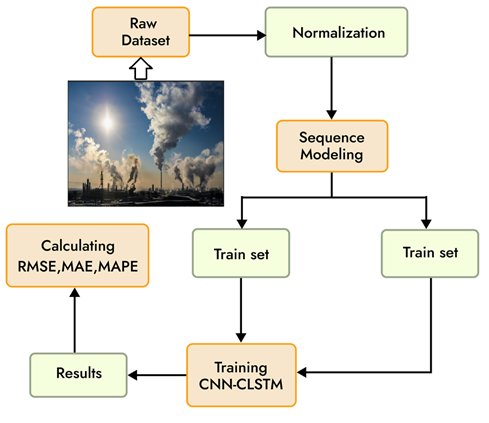
Surface ozone is a critical air pollutant responsible for significant public health impacts across global cities, with more than 365,000 premature deaths in 2019. Good forecasting of the concentrations of surface ozone is important for effective public health measures and management of air quality standards. However, current methods face challenges in dealing with the complexity of meteorological dynamics and spatial variability sometimes leading generally to uncertain predictions. Considering these aspects, we design a hybrid CNN and Concatenated CLSTM in regard to modeling the improvement of surface ozone forecasting: the hybrid CNN-CCLSTM model. It uses spatial learning of CNN to extract spatial features and convoluted temporal dependencies of Concatenated CLSTM to better account for variability in meteorological conditions. In this model, an ensemble forecasting approach is used to represent uncertainty in the climate patterns as well as their projection for the weather. To prove the efficiency of the proposed CNN-CCLSTM model, we conducted the experiment over Shenzhen city in the Pearl River Delta region of China, comparing predictions for two seasons of pollution. The results of this process show that such a hybrid model does improve the accuracy of daily predictions of ground-level ozone concentrations and hence allows effective measurement of the associated uncertainties caused by variability in the weather. This, in turn, provides a more reliable tool for air quality management and public health protection.
Total file downloads: 16